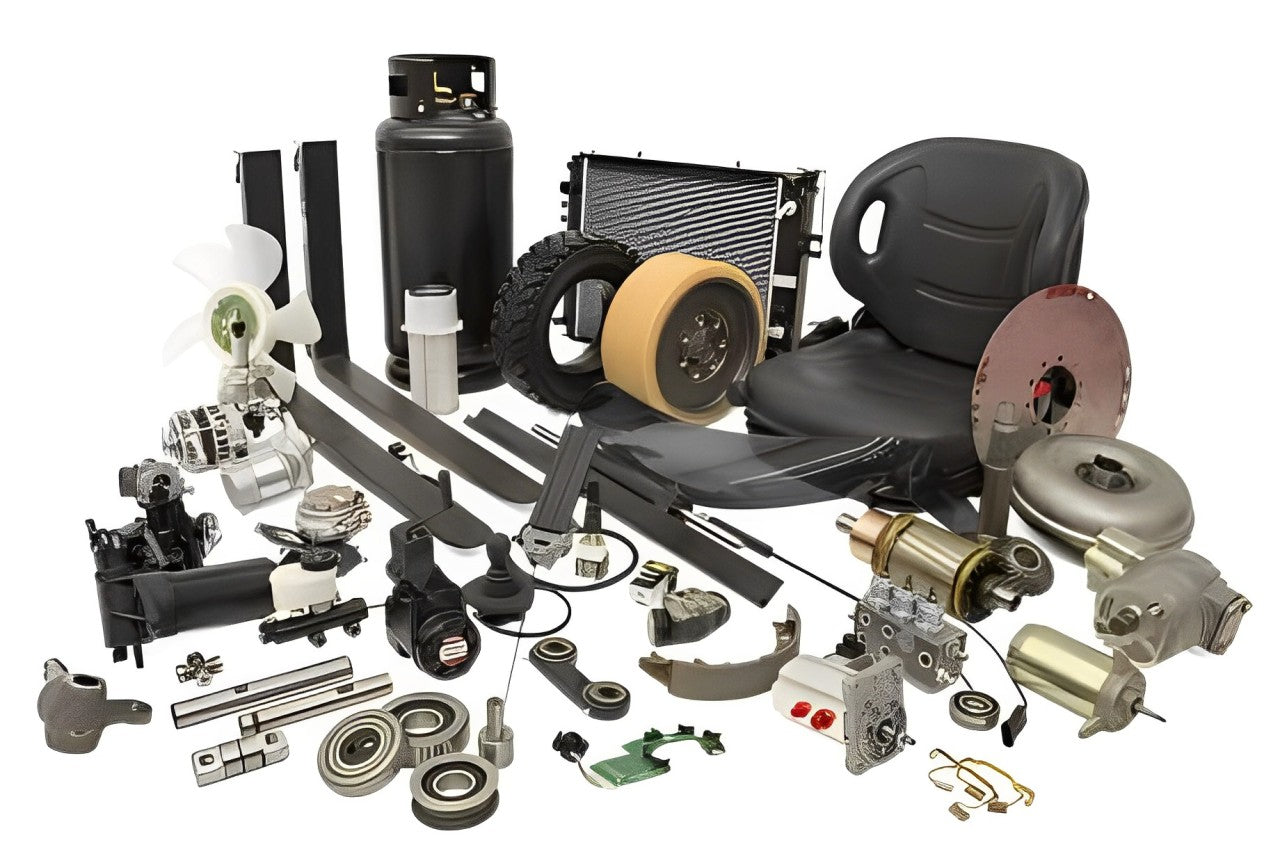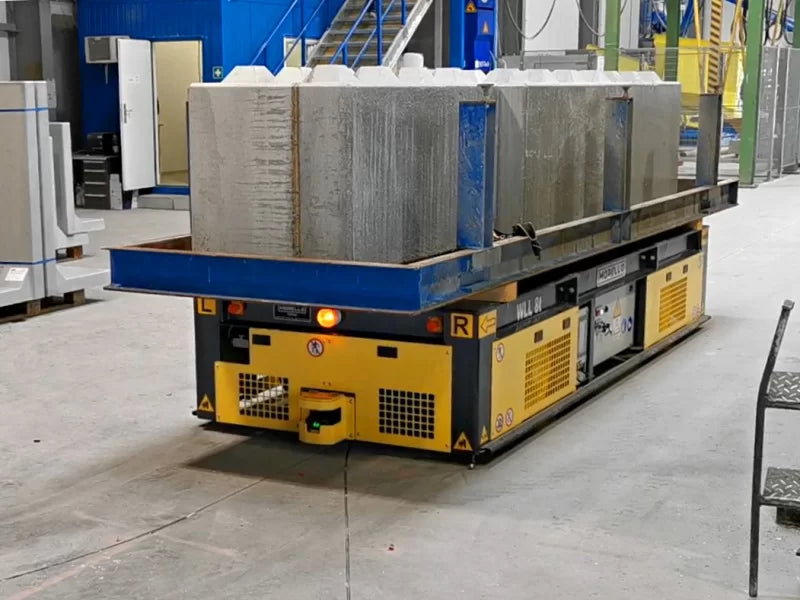Forklifts are the workhorses of many industries. They are essential for moving heavy loads in warehouses, construction sites, and docks.
However, like any machinery, they require regular maintenance and repair. This ensures their longevity and safe operation.
This guide will delve into the essential parts for forklift maintenance and repair. It will provide a comprehensive understanding of the key components, their functions, and how to keep them in top shape.
Whether you're a forklift owner, operator, or maintenance personnel, this guide will be a valuable resource.
Understanding Forklift Maintenance and Repair
Forklift maintenance is crucial for ensuring safety and efficiency. Regular checks and repairs help prevent breakdowns. This minimizes costly downtime and enhances workplace safety.
Key components require consistent attention. Regular inspections can identify issues early. They ensure that forklifts operate efficiently.
Here are common areas to focus on during maintenance:
- Hydraulic systems
- Electric components
- Engine and filters
- Tires
- Steering and brakes
- Mast and lifting gear
Each part plays a role in the machine’s performance. Familiarizing yourself with these parts helps maintain optimal functionality.
The Importance of Regular Maintenance
Regular maintenance prolongs the lifespan of forklifts. It ensures safe and reliable operations. Frequent check-ups help identify and solve potential problems before they escalate.
Neglecting routine maintenance can lead to costly repairs. It can increase safety risks. A well-maintained forklift operates more efficiently, saving both time and money.
Identifying Common Forklift Parts for Maintenance
Understanding the parts of a forklift is key to effective maintenance. The engine or motor needs regular servicing. This ensures the forklift remains powerful and efficient.
Hydraulic systems require special attention. They rely on seals, cylinders, and fluids. Regular checks can prevent leaks and maintain smooth operations. Another vital aspect is the electrical system. Batteries, starters, and alternators are essential for power and functionality.
- Engine/Motor
- Hydraulic Systems
- Electrical Components

Tires also play a significant role in forklift performance. Proper tire maintenance ensures stability and safe handling. Inspecting these parts routinely helps in maintaining a high level of operational efficiency.
Key Forklift Components and Their Functions
A forklift's performance hinges on its components. The mast, engine, tires, and other parts all contribute to its efficiency. Each component serves a specific purpose and demands proper care.
The mast is vital for lifting and lowering loads. Without it, forklifts cannot perform their primary function. The lifting mechanism ensures safe handling of heavy materials. Regular inspections can help maintain its reliability.
Another critical component is the forklift's power source. Forklifts run on either an engine or a battery. This component drives the machine and is essential for overall performance. Ensuring the power source is in good condition is key.
Tires significantly impact balance and movement. There are different types, such as cushion and pneumatic. Proper maintenance of tires is crucial for safety and efficiency.
- Mast: lifting and lowering
- Engine/Battery: power source
- Tires: balance and stability
Understanding these components and their functions ensures optimal performance. A forklift operates best when all parts work well together, and regular maintenance checks keep these components in top condition.
Mast and Lifting Mechanism
The mast is the backbone of a forklift’s lifting capability. It comprises several parts, including the forks, carriage, and chains. These components work in unison to lift, lower, and carry loads safely.
Inspecting the mast for damage or wear is crucial. Regular checks of the lift chains and lubrication are necessary. This ensures smooth operation and extends the mast's life.
Power Source: Engine and Battery
A forklift’s power source is either an engine or a battery. This component dictates its operational efficiency. Regular maintenance of these parts guarantees smooth and consistent power delivery.
Engines and batteries require periodic inspection. Checking for signs of wear or faults is vital. This proactive care prevents unexpected breakdowns and extends the lifespan of the forklift.
Tires: Types and Maintenance
Tires are crucial for forklift stability and movement. There are different types, such as cushion tires for indoor use and pneumatic tires for rougher surfaces. Each type requires specific maintenance practices.
Checking tire pressure regularly is vital for safety. It ensures proper balance and handling, reducing the risk of accidents. Well-maintained tires also help enhance fuel efficiency and overall performance.
Essential Parts for Forklift Safety
Safety is paramount in forklift operations. Essential safety parts include lights, horns, and alarms. These features ensure the visibility and awareness of both the operator and nearby workers.
Counterweights are also critical for maintaining balance. They prevent tip-overs, especially when handling heavy loads. Regular checks ensure these components perform their safety functions effectively.
Additionally, seat belts and restraint systems protect the operator. These elements keep the operator secure in the event of sudden stops or movements. Safety features are essential for risk-free operation.
Operator Controls and Safety Features
Operator controls are vital for safe forklift operation. Pedals, levers, and switches provide precise handling and control. Ergonomic designs also help reduce operator fatigue, improving overall safety.
Effective safety features include functional lights and backup alarms. These alert others of the forklift's presence, minimizing accident risks. Regular tests and maintenance of these features are critical.
Load Handling Attachments and Accessories
Forklift attachments enhance load handling capabilities. Common examples include sideshifters and fork positioners. These tools improve efficiency and adaptability for varying load types.
Attachments also help maintain safety standards during operation. Secure load handling reduces the risk of spills or falls. Proper maintenance and correct usage of these attachments ensure safe and productive work environments.
Forklift Maintenance Best Practices
Maintaining your forklift is crucial for its longevity and efficiency. Adopting best practices in maintenance helps prevent costly breakdowns. It also enhances the safety and performance of your forklift fleet.
Preventive maintenance is essential to avoid unexpected failures. Regular inspections and timely repairs form the backbone of an effective maintenance strategy. Consistent attention to your forklift can significantly reduce downtime.
A well-outlined maintenance plan includes schedules and checklists for all forklift components. This helps ensure nothing is overlooked. Forklift owners and operators should follow these practices diligently.
Implementing these best practices not only boosts forklift performance but also increases its resale value. It is a win-win for businesses relying on forklifts for daily operations.
Preventive Maintenance Schedules and Checklists
Having a preventive maintenance schedule in place is crucial. It prevents minor issues from escalating into major problems. Consistency in following these schedules ensures your forklift operates smoothly.
Checklists are helpful tools for organized inspections. They guide maintenance personnel through systematic checks of essential parts. Regularly updating and refining these checklists enhances their effectiveness and covers all maintenance needs.
Troubleshooting and Repairs
Troubleshooting is essential for identifying forklift issues early. Timely detection allows for effective repairs, minimizing machine downtime. Operators should always be vigilant for unusual sounds or performance issues.
Quick and efficient repairs are vital for maintaining operational flow. Ensure that trained professionals handle complex issues. Keeping a log of repairs aids in understanding recurring problems and planning future maintenance strategies.
Sourcing Quality Forklift Parts and Accessories
Finding reliable parts and accessories is vital for forklift maintenance. Online sites like AAA Forklifts carry refurbished and used parts that have been inspected and checked. Parts like these can save time and money. Quality components ensure the forklift runs smoothly and safely. Opting for substandard parts can lead to frequent breakdowns and increased costs over time.
It's crucial to source parts from reputable suppliers. Look for vendors who offer genuine parts along with solid warranties. This not only guarantees performance but also provides peace of mind.
In addition to vendor reliability, consider the compatibility of parts with your forklift model. Always cross-check specifications to ensure you’re getting the right fit. This can prevent installation issues and performance flaws.
OEM vs. Aftermarket Parts
When choosing parts, understanding the differences between OEM and aftermarket options is essential. OEM parts are made by the original manufacturer, promising a precise fit and reliability. Conversely, aftermarket parts might be more affordable, but quality varies significantly.
Always weigh your options based on your specific needs and budget. Prioritize quality and compatibility to ensure consistent forklift performance.
Tips for Keeping a Well-Stocked Parts Inventory
Maintaining a well-stocked inventory of parts is critical for reducing downtime. Ensure you have essential components readily available to avoid work interruptions. Regularly assess and update your inventory to match current forklift needs and potential future repairs.
Using inventory management software can streamline the tracking of parts. This allows quick identification of low-stock items and predicts future needs. Stay organized to ensure your forklifts remain operational and efficient. While you can't stock every part, AAA Forklifts offers inspected and certified refurbished and used parts, providing a cost-effective and reliable solution for your forklift needs.
Conclusion
Proper maintenance of forklifts relies heavily on understanding and sourcing essential parts and accessories. Regular inspections and timely replacements ensure your forklifts operate safely and efficiently.
By investing in quality parts and following best practices, you extend the lifespan of your forklifts and improve productivity. This proactive approach saves time and cuts long-term costs.




Leave a comment
This site is protected by hCaptcha and the hCaptcha Privacy Policy and Terms of Service apply.